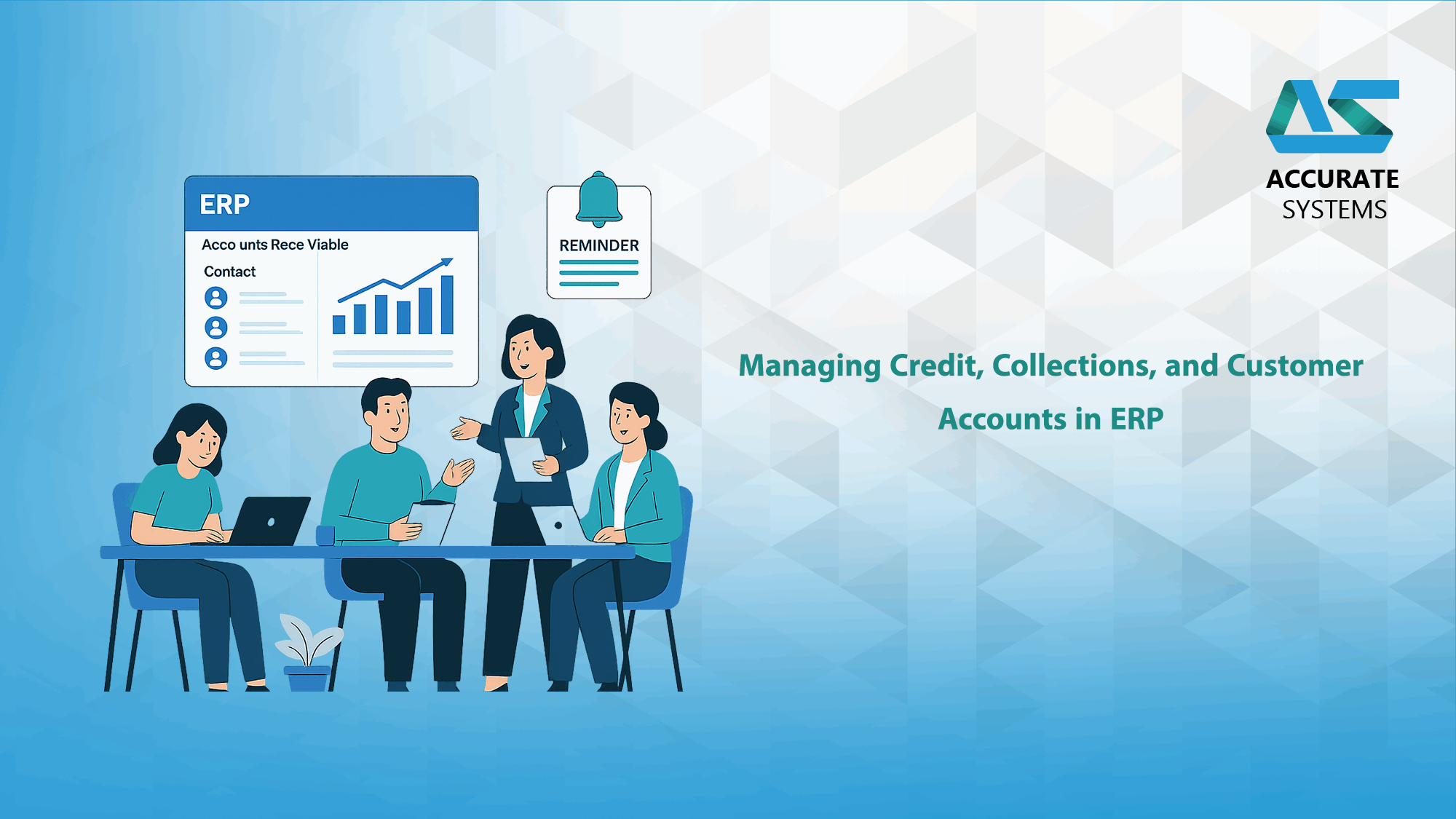Introduction: Why Receivables Management Matters in Project-Based Businesses
For concrete manufacturers and suppliers working with contractors and large construction projects, managing receivables isn’t just about issuing invoices—it’s about cash flow, risk, and long-term customer relationships. Project-based clients often operate on milestone payments, retainage terms, and complex billing schedules. Delayed collections or mismanaged credit exposure can strain working capital and limit growth.
Enterprise Resource Planning (ERP) systems are key to transforming credit and collections from manual, reactive processes into strategic, proactive systems. By centralizing financial data, automating alerts, and integrating customer profiles with accounting, ERP software improves both visibility and control over the receivables lifecycle.
Centralizing Customer Accounts and Credit Profiles
ERP platforms consolidate all customer-related information into unified profiles that include financial history, project involvement, credit limits, contact details, and payment behaviors.
Key ERP Capabilities:
- Customer Master Records: Maintain centralized, up-to-date client data across sales, finance, and service teams.
- Credit Limits and Terms: Set custom credit policies per customer, including days allowed, limit amount, and payment methods.
- Payment Terms by Project: Manage varying payment schedules tied to specific jobs, BOQs, or milestones.
- Blocked Accounts for Overdue Balances: Automate sales restrictions for high-risk or overdue accounts.
Benefits:
- Reduce manual tracking and duplication of customer data
- Control credit risk more effectively with real-time monitoring
- Apply tailored financial terms based on client risk profiles
Streamlining Invoicing and Receivables in Project Environments
Ready-mix and construction supply businesses often generate multiple invoices per project—each tied to pour dates, quantity milestones, or partial deliveries. ERP systems link sales orders, dispatch records, and delivery notes to simplify invoice generation.
Automation Features:
- Order-to-Invoice Workflows: Auto-generate invoices from delivery records with pre-approved mix pricing and quantities.
- Milestone Billing: Configure invoicing based on agreed deliverables, approvals, or site measurements.
- Multi-Currency & Tax Compliance: Handle regional rules (e.g., ZATCA-compliant invoicing in Saudi Arabia) with built-in VAT and QR code generation.
- Recurring Invoices: Set up contract-based billing for long-term supply agreements.
Benefits:
- Accelerate billing cycles and reduce human error
- Maintain consistency in pricing, discounts, and compliance
- Improve collection success with faster, accurate invoicing
Proactive Collections Management and Aging Reports
ERP systems track outstanding invoices, due dates, and customer interactions. This allows teams to prioritize collections and follow-ups.
Receivables and Collections Tools:
- Accounts Receivable Aging Reports: Real-time breakdown of overdue invoices by client and aging bracket (30/60/90 days).
- Automated Payment Reminders: Schedule SMS or email alerts for upcoming or past due invoices.
- Customer Ledger Views: Provide a full statement of customer transactions, outstanding amounts, and disputes.
- Dispute Resolution Logs: Track billing issues, credits, and communication history for better resolution.
Benefits:
- Improve DSO (Days Sales Outstanding)
- Reduce dependency on manual collection logs or spreadsheets
- Maintain professional, timely communication with clients
Integrating Finance and Operations for Cash Flow Visibility
ERP bridges the gap between field operations and finance by linking billing events (delivery, production, invoicing) directly to accounts receivable.
Cash Flow Insights:
- Cash Forecasting: Use real-time billing and collections data to project inflows.
- Receivables Dashboard: Track total overdue, expected receipts, and collector performance.
- Credit Utilization Reports: View how much of each client’s credit line is used and for which projects.
Benefits:
- Enable finance teams to plan payroll, vendor payments, and investments more confidently
- Align sales and dispatch with finance policies (e.g., hold orders for overdue clients)
Conclusion: Receivables as a Strategic Function with ERP
In the concrete and construction materials industry, receivables management is core to business sustainability. ERP systems not only automate and centralize collections—they turn receivables into a strategic lever for cash flow optimization, risk reduction, and improved customer relations.
By managing credit exposure, accelerating billing, and tracking collections in real time, companies can:
- Shorten payment cycles
- Improve cash forecasting
- Reduce write-offs and disputes
- Build stronger client relationships rooted in trust and transparency
#ERPNext #ReceivablesManagement #ConcreteERP #CreditControl #ConstructionFinance #CustomerAccounts #ZATCACompliance #CashFlowOptimization #ProjectBilling #DigitalFinance



Leave A Comment